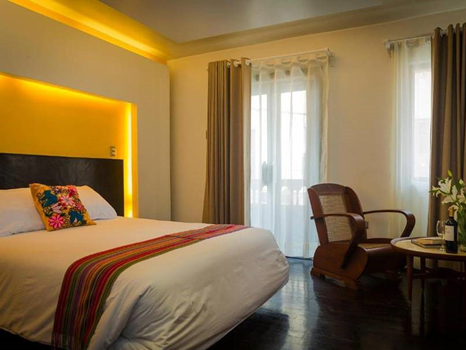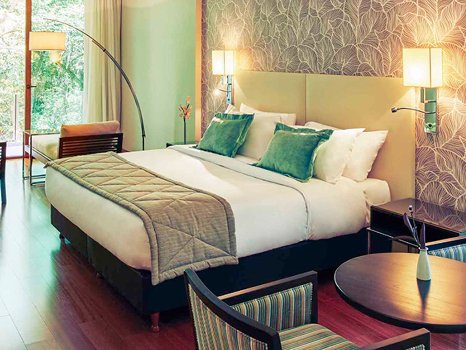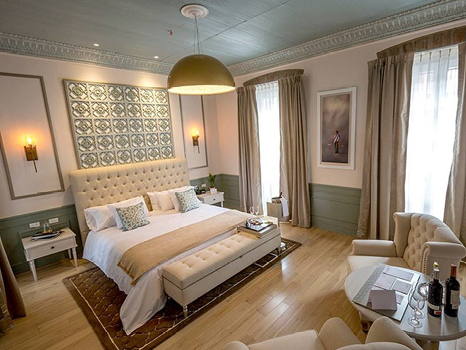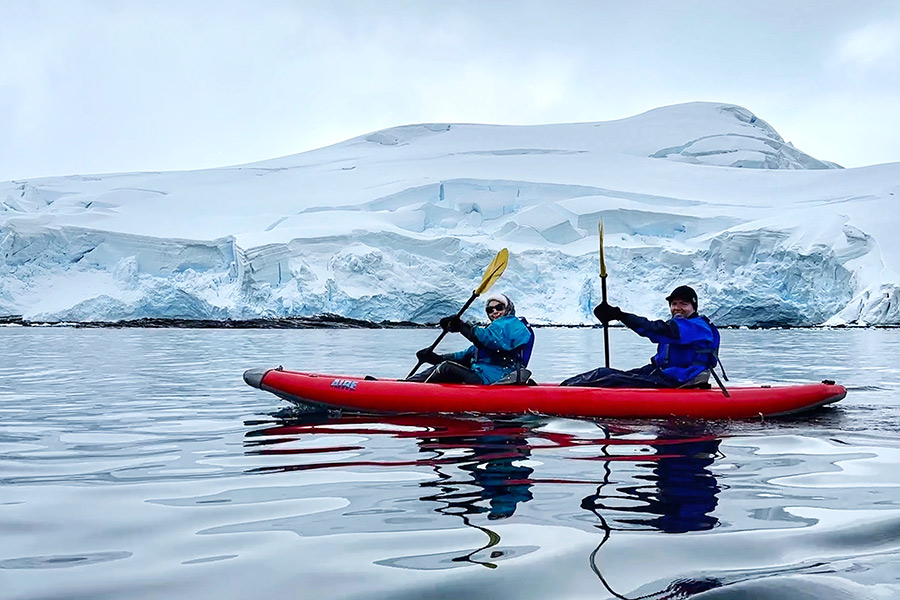 | CAT F - Triple Porthole Stateroom Features- These cabins are on deck 3 and measure between 18-22 sqm. Cabins feature private en-suites and are close to the mudroom and loading platforms for easy access to disembark the ship for activities. Triple staterooms are normally configured with twin beds, however a double bed can be accommodated. The third berth is a single bed.
All stateroom types contain a safety box, television, refrigerator, several 230 W power and USB outlets- additionally, bathrobes, slippers, toiletries (body wash, lotion, shampoo) and a hairdryer are also included. | CAD 18,937Available Enquire Now
- Triple (3 Berths ( 1x Double OR 2x Twin Beds & 1 Single Bed)
- Share Male (1 berth)
- Share Female (1 berth)
|
 | CAT D - Porthole Stateroom Features- Porthole Staterooms are located on deck 3 and 4 and measure from 13-22 sqm. They are perfect for those who want a comfortable base while onboard. All cabins have a double or 2 single beds and a bathroom. Please note the cabin layout and size may vary.
All stateroom types contain a safety box, television, refrigerator, several 230 W power and USB outlets- additionally, bathrobes, slippers, toiletries (body wash, lotion, shampoo) and a hairdryer are also included. | CAD 24,469Available Enquire Now
- Double (2 Berths)
- Twin (2 Beths)
- Single (1 Berth)
- Share Male (1 berth)
- Share Female (1 berth)
|
 | CAT G - Single Porthole Stateroom Features- Standard Single Staterooms are on Deck 3 and measure approx. 14 sqm with a single twin bed. They offer convenient access to the Mudroom, which facilitates easy access to the Zodiacs during embarkation and disembarkation for your expeditions.
All stateroom types contain a safety box, television, refrigerator, several 230 W power and USB outlets-additionally, bathrobes, slippers, toiletries (body wash, lotion, shampoo) and a hairdryer are also included. | Sold Out Enquire Now
|
 | CAT E - French Balcony Stateroom Features- Located on Deck 7, the well-appointed French balcony staterooms contain floor to ceiling windows and a charming French balcony with stunning views. Each suite includes a double bed and a bathroom and is approx. 16 sqm. All stateroom types contain a safety box, television, refrigerator, several 230 W power and USB outlets- additionally, bathrobes, slippers, toiletries (body wash, lotion, shampoo) and a hairdryer are also included. Please note that bedding is not able to be configured as twin. | CAD 26,543Available Enquire Now
- Double (2 Berths)
- Single (1 Berth)
|
 | CAT C - Standard Balcony Stateroom Features- Standard Balcony Staterooms are on Deck 4 and measure approx. 18-22 sqm. They include a balcony, a double or two single beds, a sitting area and a bathroom. All stateroom types contain a safety box, television, refrigerator, several 230 W power and USB outlets- additionally, bathrobes, slippers, toiletries (body wash, lotion, shampoo) and a hairdryer are also included. | Sold Out Enquire Now
- Double (2 Berths)
- Twin (2 Berths)
- Single (1 Berth)
|
 | CAT CS - Superior Balcony Stateroom Features- Superior Balcony Staterooms are located on Deck 4 and 6. These are the most abundant cabin type onboard and measure approx. 22-25 sqm. Each Stateroom includes a balcony, a double bed or two single beds, a bathroom, and a small selection of cabins have a sofa that can be used as an extra bed for a child. Note that an additional cost applies for third person & sofa bed is on request only. If you're traveling with family and require two Staterooms, there's an option to book two rooms with connecting doors within this category, on a request basis only. | CAD 28,617Available Enquire Now
- Double (2 Berths)
- Twin (2 Berths)
- Single (1 Berth)
- Triple (2 Berths + Sofa Bed for Child only)
- Share Male (1 berth)
- Share Female (1 berth)
|
 | CAT CXL - Grand Balcony Stateroom Features- XL Balcony Staterooms are on Deck 4 and measure approx. 25-30 sqm. They include a balcony, a double or two single beds, a sitting area and a bathroom. All stateroom types contain a safety box, television, refrigerator, several 230 W power and USB outlets- additionally, bathrobes, slippers, toiletries (body wash, lotion, shampoo) and a hairdryer are also included. | Sold Out Enquire Now
- Double (2 Berths)
- Twin (2 Berths)
- Single (1 Berth)
|
 | CAT B - Balcony Suite Features- Balcony Suites are located on deck 4 and 6. Each suite offers a comfortable seating area, a bathroom, and a large balcony, with the choice of double or twin bedding. These suites are designed to accommodate two guests.
Your suite stay includes a range of VIP extras such as wine and fruit on arrival, restocked non-alcoholic mini-bar, laundry service, and an in-room espresso machine. | Sold Out Enquire Now
- Double (2 Berths)
- Twin (2 Berths)
|
 | CAT A - Junior Suite Features- Located on Deck 7, the Junior Suite boasts stunning views. Each suite features a double or twin beds, a comfortable seating area, a spacious bathroom, and a private balcony. With the option of a sofa bed included, the suite can comfortably accommodate up to three guests. Please note the advertised price is based on 2 guests occupying the cabin.
All stateroom types contain a safety box, television, refrigerator, several 230 W power and USB outlets- additionally, bathrobes, slippers, toiletries (body wash, lotion, shampoo) and a hairdryer are also included. | Sold Out Enquire Now
- Double (2 Berth)
- Twin (2 Berth)
- Single (1 Berth)
- Triple (2 Berth + Sofa Bed)
|
 | CAT PS - Premium Suite (Freydis Suite) Features- The Premium Suite on the Ocean Albatros is the second-largest Stateroom available on the ship, located on Deck 4. This spacious 2-bedroom suite includes a double or twin beds, a comfortable sofa bed, a table and chair, a private balcony, and a generously sized bathroom. The advertised price is based on 2 guests.
All stateroom types contain a safety box, television, refrigerator, several 230 W power and USB outlets- additionally, bathrobes, slippers, toiletries (body wash, lotion, shampoo) and a hairdryer are also included. | Sold Out Enquire Now
- Double (2 Berths)
- Twin (2 Berths)
|
 | CAT FS - Family Suite (Brynhilde Suite) Features- This 2 Bedroom Family Suite is the largest stateroom option on board. Located on Deck 7, it comprises of 2 interconnecting French Balcony Suites and can accommodate up to 5 people on two double beds and a sofa bed. This category is available on request. Please note queen beds are fixed configuration. Advertised price is based on 4 guests.
All stateroom types contain a safety box, television, refrigerator, several 230 W power and USB outlets- additionally, bathrobes, slippers, toiletries (body wash, lotion, shampoo) and a hairdryer are also included. | Sold Out Enquire Now
- Quad (4 Berth)
- Quint (4 Berth + Sofa Bed)
|










































